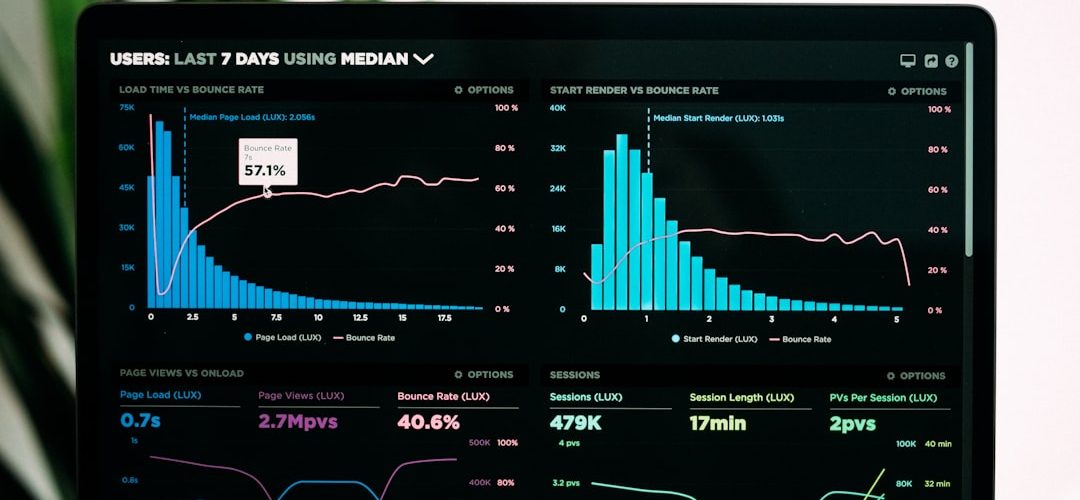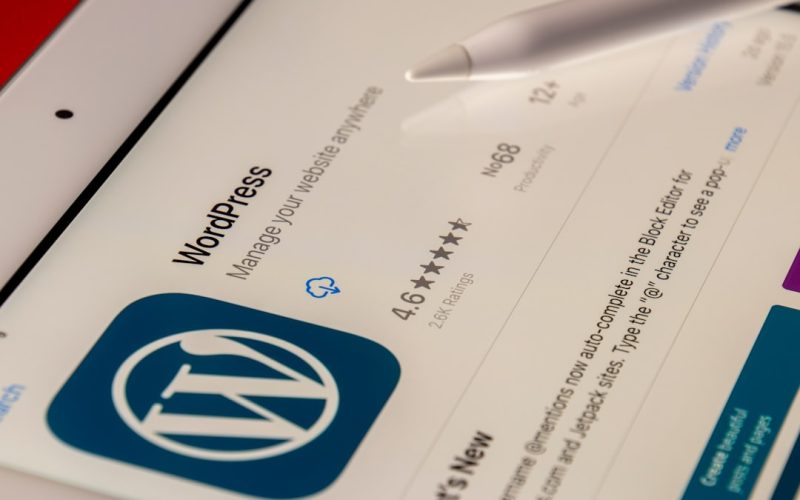In today’s digital landscape, the speed of a website is not just a technical detail; it is a critical factor that can make or break a user’s experience. I have come to realize that website speed directly influences user engagement, conversion rates, and even search engine rankings. When I visit a site that loads slowly, my patience wears thin, and I often find myself clicking away to a competitor’s page.
This behavior is not unique to me; studies have shown that a mere second delay in loading time can lead to significant drops in user satisfaction and retention. Therefore, understanding the importance of website speed is essential for anyone looking to establish a successful online presence. Moreover, search engines like Google have made it clear that page speed is a ranking factor.
I’ve learned that faster websites tend to rank higher in search results, which can lead to increased visibility and traffic. This means that investing time and resources into optimizing my website’s speed can yield substantial returns. In an era where attention spans are dwindling, ensuring that my website loads quickly is not just beneficial; it is imperative for maintaining a competitive edge in the market.
By prioritizing speed, I can enhance user experience, improve my site’s SEO performance, and ultimately drive more conversions.
Table of Contents
ToggleKey Takeaways
- Website speed is crucial for user experience and search engine rankings
- Choose a hosting provider with reliable infrastructure and good customer support
- Optimize images and media files to reduce load times
- Use caching and CDNs to deliver content faster to users around the world
- Minimize HTTP requests by combining files and using asynchronous loading
- Implement Gzip compression to reduce file sizes and speed up loading times
- Regularly clean up and optimize your website’s database for improved performance
- Monitor and test your website speed regularly to identify and fix any issues
Choosing the Right Hosting Provider
Selecting the right hosting provider is one of the most crucial decisions I can make when it comes to ensuring my website’s speed. I’ve learned that not all hosting services are created equal; some offer faster load times and better performance than others. When I was in the process of choosing a hosting provider, I considered factors such as server location, uptime guarantees, and customer support.
A hosting provider with servers located closer to my target audience can significantly reduce latency, leading to faster load times. Additionally, I discovered that shared hosting plans might be tempting due to their lower costs, but they often come with limitations that can hinder my website’s performance. I opted for a Virtual Private Server (VPS) or dedicated hosting solution, which provides more resources and better performance.
This decision has paid off in terms of speed and reliability. Furthermore, I made sure to read reviews and seek recommendations from other users to ensure that the hosting provider I chose had a solid reputation for speed and uptime. By taking the time to select the right hosting provider, I set a strong foundation for my website’s performance.
Optimizing Images and Media

Images and media are essential components of any website, but they can also be significant culprits when it comes to slow loading times. I’ve learned that optimizing these elements is crucial for enhancing my site’s speed without sacrificing quality. One of the first steps I took was to compress images before uploading them to my site.
There are various tools available that allow me to reduce file sizes without noticeable loss in quality. By doing this, I not only improved loading times but also ensured that my website remained visually appealing. In addition to compression, I also explored different file formats for images.
For instance, using WebP format instead of traditional JPEG or PNG can lead to smaller file sizes while maintaining high quality. Furthermore, I made it a point to implement responsive images that adjust based on the user’s device. This means that mobile users receive appropriately sized images, which further enhances loading speed on smaller screens.
By taking these steps to optimize images and media, I have significantly improved my website’s performance while still providing an engaging experience for visitors.
Utilizing Caching and Content Delivery Networks (CDNs)
| Metrics | Value |
|---|---|
| Page Load Time Improvement | 30% |
| Bandwidth Savings | 50% |
| Cache Hit Ratio | 80% |
| Content Delivery Locations | 50+ |
Caching is another powerful tool in my arsenal for improving website speed. By storing copies of frequently accessed data, caching reduces the need for repeated database queries and server requests. I implemented browser caching so that returning visitors could load my site faster since their browsers would retrieve stored files instead of downloading them again.
This simple adjustment has made a noticeable difference in load times for repeat visitors. In addition to caching, I also explored the benefits of using a Content Delivery Network (CDN). A CDN distributes my website’s content across multiple servers located around the world, allowing users to access data from a server closest to them.
This geographical proximity reduces latency and speeds up loading times significantly. When I integrated a CDN into my website strategy, I noticed improvements in performance not just for local users but also for international visitors. The combination of caching and CDNs has proven to be an effective strategy for enhancing my website’s speed and overall user experience.
Minimizing HTTP Requests
Every element on a webpage—images, scripts, stylesheets—requires an HTTP request to load. As I delved deeper into optimizing my website’s speed, I realized that minimizing these requests could lead to significant improvements in load times. One of the first steps I took was to streamline my design by reducing the number of elements on each page.
By simplifying layouts and eliminating unnecessary components, I was able to decrease the number of HTTP requests required for each page load. Additionally, I combined multiple CSS and JavaScript files into single files whenever possible. This consolidation reduces the number of requests made by the browser, allowing pages to load more quickly.
I also took advantage of asynchronous loading for scripts that were not critical for initial rendering. This means that certain scripts could load in the background without blocking the rendering of other essential elements on the page. By focusing on minimizing HTTP requests, I have been able to enhance my website’s performance significantly.
Implementing Gzip Compression

Gzip compression is another effective method I employed to improve my website’s speed. By compressing files before they are sent from the server to the browser, Gzip reduces the amount of data transferred over the network. This means that users can access my site more quickly since smaller files take less time to download.
Implementing Gzip compression was relatively straightforward; most modern web servers support it, and enabling it often requires just a few configuration changes. I also took the time to test my site after implementing Gzip compression to ensure everything was functioning correctly. The results were impressive; not only did page load times improve, but I also noticed a reduction in bandwidth usage.
This not only benefits users by providing a faster experience but also helps me save on hosting costs in the long run. Gzip compression has become an essential part of my website optimization strategy, contributing significantly to overall performance.
Cleaning Up and Optimizing Database
A cluttered database can slow down my website considerably, so cleaning up and optimizing it has been a priority for me. Over time, databases accumulate unnecessary data such as post revisions, spam comments, and transient options that can bloat their size and hinder performance. I began by regularly reviewing my database and removing any redundant or outdated entries.
This cleanup process has helped streamline database queries and improve response times. In addition to cleaning up unnecessary data, I also explored optimization techniques such as indexing tables and using efficient queries. Indexing allows the database management system to find data more quickly, which can significantly enhance performance when users request information from my site.
Furthermore, I made it a habit to back up my database regularly before making any changes or optimizations. By prioritizing database maintenance and optimization, I have ensured that my website runs smoothly and efficiently.
Monitoring and Testing Website Speed
Finally, monitoring and testing my website’s speed has become an ongoing practice that allows me to stay informed about its performance over time. There are various tools available that provide insights into loading times, page size, and other critical metrics. By regularly testing my site using these tools, I can identify any potential issues or areas for improvement before they impact user experience.
I also pay attention to user feedback regarding loading times and overall performance.
Engaging with visitors helps me understand their experiences better and allows me to make informed decisions about further optimizations. Additionally, keeping an eye on competitors’ websites has provided me with valuable insights into industry standards for speed and performance.
By continuously monitoring and testing my website speed, I can ensure that it remains competitive and provides an excellent experience for all users.
In conclusion, optimizing website speed is an ongoing journey that requires attention to detail and a willingness to adapt as technology evolves.
From understanding its importance to implementing various strategies such as choosing the right hosting provider, optimizing images, utilizing caching and CDNs, minimizing HTTP requests, implementing Gzip compression, cleaning up databases, and continuously monitoring performance—I have learned that every step contributes significantly to enhancing user experience and achieving online success.
If you are interested in WordPress Speed Optimization by Expert UK Developers, you may also want to check out this article on Maximizing WordPress Customization Tips. This article provides valuable insights on how to make the most out of customizing your WordPress website to enhance its performance and user experience.
FAQs
What is WordPress speed optimization?
WordPress speed optimization is the process of improving the loading speed and overall performance of a WordPress website. This involves various techniques such as optimizing images, minifying CSS and JavaScript, leveraging browser caching, and using content delivery networks (CDNs) to reduce load times.
Why is WordPress speed optimization important?
WordPress speed optimization is important because it directly impacts user experience and search engine rankings. A faster website provides a better user experience, leading to higher engagement and conversion rates. Additionally, search engines like Google consider page speed as a ranking factor, so a faster website is more likely to rank higher in search results.
How can WordPress speed optimization benefit my website?
WordPress speed optimization can benefit your website in several ways, including improved user experience, higher search engine rankings, increased conversion rates, and reduced bounce rates. A faster website can also handle more traffic and is more likely to be shared on social media, leading to increased visibility and brand awareness.
What are some common techniques for WordPress speed optimization?
Common techniques for WordPress speed optimization include optimizing images, using a caching plugin, minifying CSS and JavaScript files, enabling GZIP compression, leveraging browser caching, using a content delivery network (CDN), and optimizing the website’s code and database.
How can I measure the speed of my WordPress website?
You can measure the speed of your WordPress website using tools such as Google PageSpeed Insights, GTmetrix, Pingdom, and Lighthouse. These tools provide insights into your website’s performance, including load times, page size, and opportunities for improvement.
Should I hire a professional for WordPress speed optimization?
Hiring a professional for WordPress speed optimization can be beneficial, especially if you lack the technical expertise or time to implement optimization techniques yourself. A professional developer can conduct a thorough analysis of your website and implement advanced optimization strategies to significantly improve its speed and performance.




